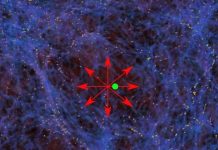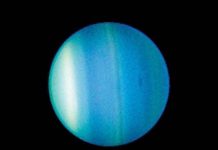
Scientists are diving deep into one of space’s biggest mysteries: dark matter.
This invisible substance isn’t something we can see directly, but many experts believe it’s crucial for explaining how the universe functions.
A recent study by astronomers using computer simulations has brought new evidence supporting the existence of dark matter.
The team, including researchers from the University of California, Irvine and Pomona College, focused on solving a big question in space science: Is dark matter real, or can we explain the universe with only the matter we see?
Their findings were recently published in the Monthly Notices of the Royal Astronomical Society.
Dark matter is different from the stuff that makes up stars and planets that we can see or touch. Even though it’s invisible, scientists think it makes up about 85% of the total mass of the universe.
Without it, many things about the universe just wouldn’t make sense, like the way galaxies spin and move.
The researchers, led by Francisco Mercado, a recent Ph.D. graduate now working as a postdoctoral scholar, used computer simulations to look at both visible matter and dark matter.
They examined real data from galaxies and checked how both types of matter would explain the features observed in space.
They discovered certain patterns in the movement of stars and gases in galaxies that seem to only be possible if dark matter is included. According to the team, these patterns appear consistently across many galaxies, supporting the idea that dark matter plays a key role in the universe’s structure.
James Bullock, a physics professor at UCI, explained that these findings make the dark matter explanation seem more natural than other theories, like those suggesting changes in our understanding of gravity.
The observations used in this study were originally made by scientists who don’t believe in dark matter, yet the data inadvertently supported the dark matter model.
Jorge Moreno, another key researcher from Pomona College, mentioned that while there’s still debate in the scientific community, the new results might help find some common ground.
He noted that features in galaxies suggesting the presence of dark matter appear only when simulations include both dark and regular matter.
Looking forward, the researchers are excited to further test the dark matter theory. They hope to use their methods to differentiate between various dark matter models, potentially narrowing down the properties of this elusive matter.
This research moves us closer to understanding the true nature of the universe and our place within it.



